Atlanta’s Gated Getaways: Open to All; Closed to Some!
Atlanta has some of the most beautiful and relaxing places to ever witness, yet not everyone will be able to experience them all. I have only been in Atlanta for less than a year, and in this one year I have not been able to do everything there is to do even if I wanted to, but I have been able to go places that I would have never imagined even existed, but even my close encounters, I realize that not every place is for everyone!
Well, here is my take, many people have moved to Atlanta for various reasons, including fashion careers, acting jobs, the music industry, the history of Atlanta, the urban environment and of course the hot topic, “Gentrification” which is “the process of renewal and rebuilding accompanying the influx of middle-class or affluent people into deteriorating areas that often displaces poorer residents.” (Webster) But for whatever reason, Atlanta has become the place to be for people of all races. Even though there are diversified groups of people in Atlanta. One thing that many people don’t know is t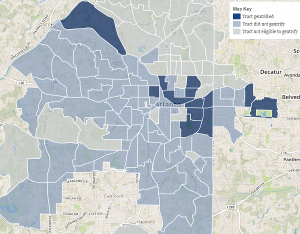 hat, Atlanta is segregated in certain parts with certain people.
hat, Atlanta is segregated in certain parts with certain people.
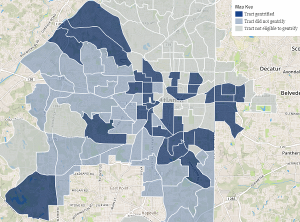
Here is a map that shows Atlanta’s division of people. While it may not be accurate with terms, it sure tells a story. Though we don’t always intentionally draw these lines, we help distinguish them by where we shop, where we eat, the places we go, and most importantly the places we don’t go. But of course, there is also a thing as “built environments”.
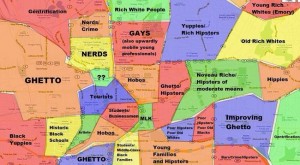
Architectures have a job and their job is to create and design functional buildings and places that serve whatever purpose is needed. Now, the question is: are some of the designs meant to keep people out: exclusion? That is the million dollar question. I would say yes. Through design, policies and requirements, this is what creates inclusion as well as exclusion. During my down time, when I can get away from my responsibilities and enjoy just a little bit of relaxation, I like to explore out into Atlanta’s attractions. Yes, I am a person who loves my relaxation. There is so much to do in Atlanta, I could go on new adventures every week, while I have ventured out, I have managed to see two brilliant locations, the Aquarium, the High Museum of Arts. These were beyond amazing and for myself quite refreshing. But one of my favorites by far has been the Chattahoochee Coffee Company. Such a serene and beautiful place off of the river, in a gated community, but still accessible to the public.
There is also one that I can only wish to enjoy due to my love for mini golf, The East Lake Golf Club. Why would that be? Well, But remember when I said, not every place is for everyone. This partially what I am referring to. You see, while many places welcome the public, or all people. Some places, like the Eastlake Golf Club, does not. Even though the East Lake Golf Club rests in the East Lake Neighborhood that in recent years, went through gentrification. During these times, Tom Cousins and a few of his supporters went through the East Lake Neighborhood and did a complete makeover. They tore down the apartment housings and replaced them with beautiful homes, brought more jobs, better education and child care to the area.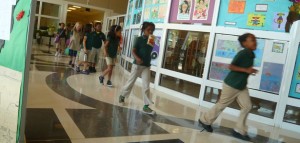
Many people can attest to the difference that this transformation had on their lives and living conditions. While some people were allowed to remain within their neighborhood, many were not. You see, this was a neighborhood of crime, usually referred to as “Little Vietnam”. Even police officers were afraid to take calls here. Between the drug infested streets and low poverty living. I recall reading the “The Big Discussion With Gentrification in Atlanta” article and I remember the interview that took place with Tom Cousins, and other investors who helped clean up the neighborhood. The mission was to bring about a change, completely transform the neighborhoods. This is exactly what they did and while they may have very well did everything that they did with GREAT intentions for us all, not everyone benefitted from this transformation. Many testimonies were given in regards to East Lake Neighborhood before and after the changes. One person in particular was Travon. He discussed his views on how gentrification erased the historical and sentimental meaning of the black culture in those neighborhoods, by mixing them or completely taking them over making them unrecognizable to what some used to call home. In regards to erasing the history built, the thing that was even more less fortunate was that lots of people weren’t able to return back to their homes after the neighborhood transformation. These new homes now had really strict guidelines as to who can stay in these homes, the kind of income they must have, drug tests of course, which I actually approve of, but overall this left many people homeless with no place to return. Imagine that.

East Lake Neighborhood is also home to the newly renovated and thriving Golf Club. The East lake Golf Club sits in the middle of the neighborhood now. When I first signed up to observe and do a built environment description the Golf Club I was very excited due to my love for golf. (I am no Tiger Woods, but I enjoy it like no other). Well, to my dismay, upon arrival to the golf course, I was met by a closed off gated community with a very strict gate attendant who not allow me to enter due to membership purposes and of course, I a person, who looks nothing like a golfer or anyone who would a membership through any major corporation was denied access. This took me by complete surprise, I was really liking forward to getting on the other side of that gate. But unfortunately, even though it sits in the heart of East Lake neighborhood, where right across the street is a spiraling down-hill playground full of people of color, this golf course was not for people like us. My first thought was, well why have it here? Here where we all can see it from the backyards of our homes, our children can witness from this trash filled, paint peeling playground and see the nicer things such as a PGA tour stop golf course and will probably never get the chance to enjoy it, as a child and possibly as an adult.

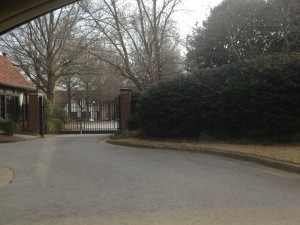

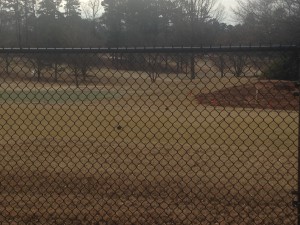
As I sat around, I teased myself by walking back and forth as I watched two upper class white men through the holes in the gate. They really seemed to be enjoying themselves on this particular Sunday morning, until I was caught staring. I felt embarrassed and further more as if I did not belong. I slowly backed away and sat in my car alongside the road to record everything that I had witnessed, the emotions I felt and everything that I could remember seeing through the gates before I made the golfers feel uncomfortable as well as I. all I can remember saying is “wow, this is beautiful and the grass is soo nurtured”. I knew that that place was a place for the elites and upper class people who could afford their membership through the positions they held. And I remember looking directly behind me, and seeing a park filled with African American children running and playing in a park that in comparison to the Golf Club was not fair, but it was all that they had.


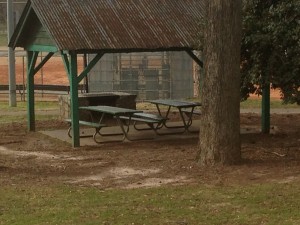
Being in the midst of the Golf Course was an experience all by itself. But I was so refreshed when it was time to choose another environment, the Chattahoochee Coffee Company. Now, I cannot say that I was not disappointed when I did my research and found out that I had yet selected another gated community. (Big sigh) but the fact that I, and people of all races, and social classes would be allowed regardless of anything demo-graphical about me was a great relief.
During my built environment observation time, I had the pleasure of observing the Chattahoochee Coffee Company, as I mentioned before. This was by far one of the greater and relaxing times I have had since living here in Atlanta. Chattahoochee Coffee Company is located off of Akers Mill Road in the Walton Community Apartments. The apartments themselves are beautiful and freshly renovated. It is a gated community that you must dial in to before you can access the Coffee House on the river. It was the most serene place to be. I have now made this my little relaxation spot that I like to revisit through the week. Due to it being closed to the public on the weekends, which I personally did not mind at all, their public hours through the week are sufficient enough: meaning they are open five days out of seven which is pretty impressive and for that I am grateful. I sat here for hours taking in the breeze in the morning and the sun in the later afternoon.
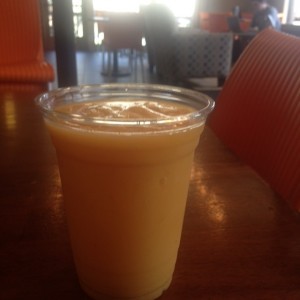 As I sipped my peach mango smoothie, I observed my surroundings which was filled with a diversified group of people alongside the river. This made me feel very welcome. There was a family walking along the river with their newly walking baby, a couple of college students huddled together studying, an African American guy listening to music as he read a book, and etc. The coffee shop attendees were very pleasant and made sure that everyone was comfortable and received the best service you could have asked for. I was very pleased with the environment. I just would have never imagined something so serene, I would have access to.
As I sipped my peach mango smoothie, I observed my surroundings which was filled with a diversified group of people alongside the river. This made me feel very welcome. There was a family walking along the river with their newly walking baby, a couple of college students huddled together studying, an African American guy listening to music as he read a book, and etc. The coffee shop attendees were very pleasant and made sure that everyone was comfortable and received the best service you could have asked for. I was very pleased with the environment. I just would have never imagined something so serene, I would have access to.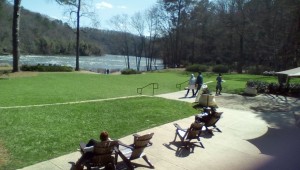
As you see, the Golf Club and the Chattahoochee Coffee Company were like night and day for me. While they are both great attractions, as well as many others in Atlanta, some of us aren’t lucky or privileged enough to experience them both or all.
Sources:
Max Blau. “Creative Loafing.” Can Anyone Stop Atlanta’s Gentrification. 13 Feb 2015. Web. 04 Feb 2016. http://clatl.com/freshloaf/archives/2015/02/03/can-anyone-stop-atlantas-rapid-gentrification.
“PBS Newshour.” Chasing the Dream: Poverty and Opportunity in America. PBS, 09 May 2015. Web. 22 Feb 2016. http://www.pbs.org/newshour/bb/can-u-s-break-clusters-poverty-roiling-south/.
Garland, Sarah . “The Atlantic .” Rich Kid, Poor Kid: How Mixed Neighborhoods Could Save America’s Schools. The Atlantic, 25 Jul 2012. Web. 28 Mar 2016. <http://www.theatlantic.com/national/archive/2012/07/rich-kid-poor-kid-how-mixed-neighborhoods-could-save-americas-schools/260308/>
“An Atlanta Neighborhood Tries To Redefine Gentrification.”Frontiers of Race, Culture and Ethnicity. Code Switch, 23 Sep 2015. Web. 04 Feb 2016. <http://www.npr.org/sections/codeswitch/2015/09/23/435293852/an-atlanta-neighborhood-tries-to-redefine-gentrification>.
 In this first picture, you can see the many different characters that stars in many of his shows and plays. This picture shows what it is all about about, the drama, the hurt, pain, hardships but also the glory and comedic relief that it provides to the audience.
In this first picture, you can see the many different characters that stars in many of his shows and plays. This picture shows what it is all about about, the drama, the hurt, pain, hardships but also the glory and comedic relief that it provides to the audience.
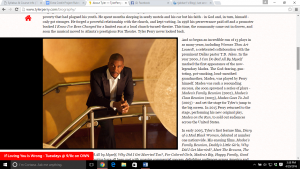 Here is an image of Tyler Perry alongside his biography of his life and all of his accomplishments. He tells the stories of how he became who he is despite who he was and encourages others that they too can do the same with the proper help with the lord above. He introduces himself and tells of where his inspiration came from. In this picture, he expresses a face of seriousness, instead of the humorous expressions he is known to have.
Here is an image of Tyler Perry alongside his biography of his life and all of his accomplishments. He tells the stories of how he became who he is despite who he was and encourages others that they too can do the same with the proper help with the lord above. He introduces himself and tells of where his inspiration came from. In this picture, he expresses a face of seriousness, instead of the humorous expressions he is known to have.
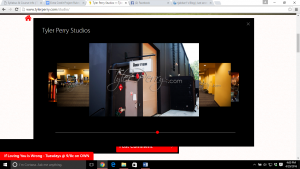 In this clip, there are images of his studio which was opened up in the year of 2008. On the website, it gives a tour of his Atlanta studio where he records his shows, it comprises of of five sound stages, a post production facility, a pond, a back lot, a 400-seat theater, a private screening room.
In this clip, there are images of his studio which was opened up in the year of 2008. On the website, it gives a tour of his Atlanta studio where he records his shows, it comprises of of five sound stages, a post production facility, a pond, a back lot, a 400-seat theater, a private screening room.
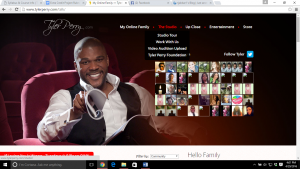 In this photo, he is pictured pointing with the paper at the screen, reading off “we want you, come join us!” He is looking directly into the camera, as if he is speaking to someone. His smile shows his passion. There are several links on the website that provides information on auditions and joining his cast. His website gives everyone a chance to audition and be apart of this christian based family who helps reach and change peoples lives.
In this photo, he is pictured pointing with the paper at the screen, reading off “we want you, come join us!” He is looking directly into the camera, as if he is speaking to someone. His smile shows his passion. There are several links on the website that provides information on auditions and joining his cast. His website gives everyone a chance to audition and be apart of this christian based family who helps reach and change peoples lives. 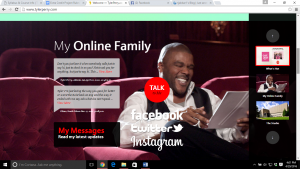 On this page, he states how he enjoys reading what the fans have to say, he loves their ideas for his shows and he takes inconsideration their input. He calls it his inspirational corner where he interacts with his fans and let them know that he will never forget about them and how he is the man he is because of their support.
On this page, he states how he enjoys reading what the fans have to say, he loves their ideas for his shows and he takes inconsideration their input. He calls it his inspirational corner where he interacts with his fans and let them know that he will never forget about them and how he is the man he is because of their support.
Tyler Perry has an open platform for Christian actors and his website is like a welcome to those who wants to come along and join his cast. He is the creator of many plays, his first one being “I Can Bad All By Myself”. He eventually branched out into films, with the character everyone knows so well “Madea”. His website showcases a sense of seriousness about sensitive topics but it also brings in the humor. The website is themed in darker colors, serious faces alongside cheerful ones which is an expression of the content that he brings to his shows.
The pictures that are posted on the website showcases his personality and interaction with his cast. Which in my opinion, allows future cast mates to see that is not all about work but about building a family of fun laughter and hard work and most importantly glorifying God despite their own troubles and the ones they create in characters.
I have been a fan of Tyler Perry for years now. When he first started his shows were centered on the black woman and their struggles, which created a platform for black women and an audience of the black community. Now you can find actors of all races in his films which I think is great. It started out a platform to reflect the trials in the black community within the black families and now it showcases that we all need Christ and we all can serve him together.
Perry opened up his studio in Atlanta which was previously the Delta Airlines campus. This is where he produces and films his shows as well as entertaining and hosting events.
His website features a biography that discusses where and how he grew up and where all of his inspiration comes from, from being homeless, poor and abused. It goes in to detail of his life story and how he became who he is and why he does what he does, providing home based humor in all of life’s circumstances. He has been an advocate and great supporter of the NAACP and has been giving back to all those who has helped him achieve his success this far.
Tyler Perry’s website is featured with many serious faces, yet delightful fun spirited characters as well.
The website gives off a classic vibe with him tailored in a nice suit, and colors of black and white, this to me shows that even though he is full comedy, he also has a business side that allows him to be serious and the true business man that he is.
Annotated Bibliography 1:
“An Atlanta Neighborhood Tries To Redefine Gentrification.”Frontiers of Race, Culture and Ethnicity. Code Switch, 23 Sep 2015. Web. 04 Feb 2016. <http://www.npr.org/sections/codeswitch/2015/09/23/435293852/an-atlanta-neighborhood-tries-to-redefine-gentrification>.
This article discusses how the east lake golf club that sits in a neighborhood that once was in the middle full of crime, poverty and public housing projects ,and a Golf course with dry patchy land where golfers risked the case of a stray bullet, but is now a PGA tour stop due to the redevelopment and Golf Club. The neighborhood was so full of trouble and crime that it was known as the war zone and nick named “Little Vietnam”. It discusses how the crime rate was 18 times the national average. The article talks about how the golf club helped reestablish the community by being a source of funds and support. Although the intentions of the reconstruction was to create mixed-income housing to go along with schools, child care and jobs of quality article discusses how the some people were forced out of the new found transformed neighborhood due to certain requirements.
I think this article is important because it gives insight from the residents who once belonged to that community before the gentrification. This article provides so much history on what East Lake neighborhoods were like and how deprived and forsaken they were. It provides information on how the changes began and the effects of those changes. Whether good or bad, it gave testimonies on how it affected those looking for a stable safe place to live and raise families and also those who were forced to remove themselves due to those new requirements.
Annotated Bibliography 2:
Deirdre A. Oakley. “ASA Footnotes: A Publication of American Sociological Association.” Annual Meeting Premieres The Atlanta Way: A Documentary on Gentrification. ASA, Jul 2010. Web. 2 Feb 2016. <http://www.asanet.org/footnotes/julyaugust10/am_0710.html>.
This article is a profound one.it talks about the first premiere of the documentary. It also discusses the contradictory effects of the gentrification of the Atlanta neighborhoods that has been taken place and causing the predominantly poor black neighborhoods more suitable for affluent white people who can afford the upgraded living areas. It had great details about the purpose of the film with several interviews including Professor Deirdre A. Oakley. She expressed her opinion with great knowledge of what has been taking place in Atlanta residence. She summarizes her views of how this is creating a less diverse environment and how one sided the benefits are for those who can afford to remain or move to Atlanta.
She gives details and information about the writer of the film, King Williams in an interview segment that wouldn’t likely be found anywhere else.it allowed him to tell his story and give us a view of what was in his mind when he created the film and what inspired him to do so.
This article is a great resource for capturing the highlights of the film and to get insight on what gentrification is and how homelessness and displacement occurred in our city. Through this site, there lies more information about gentrification and how it’s like a two sided coin and were only looking at the side that is turned up our way.
Annotated Bibliography 3:
Max Blau. “Creative Loafing.” Can Anyone Stop Atlanta’s Gentrification. 13 Feb 2015. Web. 04 Feb 2016. http://clatl.com/freshloaf/archives/2015/02/03/can-anyone-stop-atlantas-rapid-gentrification.
Can Anyone Stop Atlanta’s Gentrification is a detailed article that has maps describing and illustrating the gentrification process since the 1990s and now the most recent map of 2015. The maps are vivid, well researched and informative.
The article provides a lot of documentation on what has been happening nationally to gentrify our cities. The author states that gentrification is happening but it is also causing our neighborhoods to become more affluent driving out the previous residents that were predominantly black. The article begs the question of what is actually happening to those who previously resided in these project homes now turned lofts and condos. This also leaves us to the bigger question, is this really a good thing and if possible is there any way to stop the gentrification. This article has statements from Mayor Kasim Reed and other government officials and their views of the rapid gentrification.
This source provides helpful information on the gentrification and illustrations showing how Atlanta is gentrifying twice as fast than any other city in America. It also discusses census data for 50 of the nation’s largest cities, which was published by Governing This Month.


Annotated Bibliography #4
Bracey , Trayon . “The Big Discussion with Gentrification in Atlanta .” The Lifestyle Room . 20 Jan 2016. Web. 24 Feb 2016. <http://artrevmagazine.weebly.com/lifestyle/the-big-discussion-with-gentrification-in-atlanta.
The Big Discussion with Gentrification is a topic discussed with Travon Bracey published by The Atriv Magazine in the Lifestyle section. This article discusses His personal experiences of living in Atlanta and how gentrification has affected him and black culture as a whole in terms of socially, financially, politically, mentally and also educationally.
He discusses his experiences in the East Lake neighborhood as a child growing up, he reflects back on his memories of living in these neighborhoods and all the good memories he once shared there, with the people, the inspiring graffiti walled art,(what we may think is gang related), just everything in the environment that creates black culture. He discusses the differences in the community from then to now. He makes a lot of valid points in my opinon…
This article goes to show that even though Tom Cousins and other investors who helped clean up the neighborhood, bringing about a change, completely transforming the neighborhoods, may have very well did everything that they did with GREAT intentions for us all, but not everyone sees it that way and Travon is just one of those people who decided to speak on his views on how gentrification erased the historical and sentimental meaning of the black culture in those neighborhoods, by mixing them or completely taking them over making them unrecognizable to what some used to call home.
This article was an insightful, just to be able to read another side of a story of someone who views the former East Lake neighborhood as something more than a drug filled, crime raised, dead cop zone.
Annotated Bibliography #5
“PBS Newshour.” Chasing the Dream: Poverty and Opportunity in America. PBS, 09 May 2015. Web. 22 Feb 2016. http://www.pbs.org/newshour/bb/can-u-s-break-clusters-poverty-roiling-south/.

Chasing the Dream: Poverty and Opportunity in America is described as a multi-platform public media initiative that provides a deeper understanding of the impact of poverty on American society. This article, which I saw as the complete opposite of “The Big Discussion of Gentrification of Atlanta by Travon Bracey.
This platform allows Jimmy Williams, who after prison dedicated his life to improving poverty driven neighborhoods, to tell his story on how he was caught up dealing drugs in the East Lake community. He describes the toughness of the town and the difficulties to succeed and how he succumbed to the streets and dealing drugs, which landed him seven years in prison and also gave him what he needed to be who he is today, to be able to help those who was once in his position and to prevent others from being there.
This platform speaks of positivity about the transformation. Through research you’ll see that there are several sides to how gentrification has affected its people who live and have lived in these neighborhoods. This article just shows that everything that Tom Cousins and the foundation, Purpose Built Communities, set out to do to improve not just the neighborhood but the community surrounded by them, did in many ways have a great impact on many people.

Annotated Bibliography #6
Felton, Carly. “Atlanta Intown .” Transformation of East Lake.Springs Publishing LLC, 01 Aug 2009. Web. 20 Feb 2016. <http://www.atlantaintownpaper.com/2009/08/the-transformation-of-east-lake/>.
The Transformation at East Lake is an article published by Carly Felting, who discusses the stats that made East Lake neighborhoods such a poverty crazed and criminalized place to live in. it gives a great visual as to why, when and how to why Tom Cousins decided to embark on the journey to transforming East Lake Atlanta’s neighborhoods, these neighborhoods that were once filled with drug dealers and lords, Tom had a vision and though it is was quite risky, it was the greatest endeavor yet. This article would we great for research because it puts numbers into the equations for greater understanding as to how rough and tough these neighborhoods were before the transformation. There are also statements provided from those who were born and raised, or those who did the raising of their children there, stating that being born and subjected to this neighborhood, they never had a chance.
The article discusses the restoration of the golf course, building of new homes, and the transformation of the community, it is very detailed with numbers and it ends with stats showing the outcome of Tom Cousins attempt to making it greater, it shows in numbers the percentage of children and families who now have a chance.
Annotated Bibliography #7
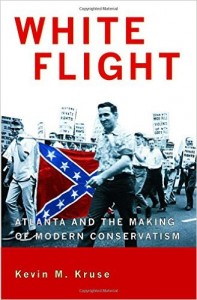
Kevin , Kruse. White Flight: Atlanta and the Making of Modern Conservatism. Princeton University Press, 2007. Print.
White Flight: Atlanta and the Making of Modern Conservatism is a book written by Kevin Kruse. It is described as “the study of white resistance to desegregation” This book discusses politics and society in the twentieth century America. You can find this book on amazon alongside several informative reviewer’s comments and excitement about this book. Although I did not read the entire book, I found the information regarding the book really insightful at the least. Through the reviews, I was able to see that the book is very easy to read and well written. This book will teach you about Atlanta and its history. It is said to be well researched and informative, and though some people may not be too fond of history and politics, Kevin Kruse did an excellent job on being able to keep your attention while revealing the truth and segregation, discrimination and white flight.
This is a review of Thomas J. Sugrue, Kahn Professor of History and Sociology, University of Pennsylvania, who is also the author of The Origins of the Urban Crisis. -“White Flight is a myth-shattering book. Focusing on the city that prided itself as ‘too busy to hate,’ Kevin Kruse reveals the everyday ways that middle-class whites in Atlanta resisted civil rights, withdrew from the public sphere, and in the process fashioned a new, grassroots, suburban-based conservatism. This important book has national implications for our thinking about the links between race, suburbanization, and the rise of the New Right.” Pretty awesome book right?
Annotated Bibliography #8
Cheney-Rice, Zak. “These Seven CIties Expose Exactly What Gentrification is Doing to America.” Identities.Mic. Mic, 2011. Web. 02 Apr 2016. <http://mic.com/articles/102004/these-7-cities-expose-exactly-what-gentrification-is-doing-to-america#.ve9STekQ6>.
This article was written by Zak Cheney-Rice, the Senior Staff writer of mic, on October 22, 2014, which was published on mic.com. I find this source to be extremely useful due to the format and layout of the site, and how easy it is to scroll through and see the numbers and percentages that are used to describe the problems and patterns of gentrification in the seven cities listed: Boston, Seattle, New York City, San Francisco, Washington D.C., Atlanta of course, and Chicago.
This site provides information that other websites may not have because it is not just based off of opinions, but facts and reality instead. While reading this article, I found myself being saddened at the reality of gentrification and how many have prospered and the expense of others and the loss of their homes and environments. Through reading, I found the article to very knowledgeable and insightful none the least. If you ever wanted to know what is going on the world, and not just Atlanta, this is the website that provides a heads up on the changes and transformations that has been happening in our very own town and others since the 1960s.
Annotated Bibliography #9

Garland, Sarah . “The Atlantic .” Rich Kid, Poor Kid: How Mixed Neighborhoods Could Save America’s Schools. The Atlantic, 25 Jul 2012. Web. 28 Mar 2016. <http://www.theatlantic.com/national/archive/2012/07/rich-kid-poor-kid-how-mixed-neighborhoods-could-save-americas-schools/260308/>.
Rich Kid, Poor Kid: How Mixed Neighborhoods Could Save America’s Schools is an article written in the online magazine: the Atlantic. It is written by Sarah Garland and was published on July 25, 2012. This article discusses the the question: “ In a former Atlanta slum, low- and middle-income families now live side by side — and send their children to the same excellent school. Is this surprising model too good to be true?”
This article discusses integration in a Charter school in East Lake Atlanta, Charles Drew Charter School. It gives the testimony of Theresa Cartwright and her experiences in the public school system during the “little Vietnam days” and how her mom transferred her and gave her a better opportunity and life while her fellow classmates traveled the road of public assistance. She goes to mention how over the years, the school system has changed and how she pulled her son from private school and enrolled him into Charles Drew Charter school that is much more integrated regardless of race and social class, which I think was a great idea.
This article goes to show how integration can produce great results for the children in our community. It gives them something to work towards and a better perspective of live when they can see better, they can then believe that they can achieve better.
This article was very educating and interesting. I love the personal testimonies because it gives insight on a real life event instead of opinions or projections of the integration turn out. I learned a lot about the school systems here in Atlanta and all that the transformation have down for our community instead of all the downfalls of gentrification.
Annotated Bibliography #10
Apperson, Jarod . “An Afterward to White Flight: Atlanta’s Return to Community & Long Road Toward Integration.” East Atlanta Patch . 10 Feb 2013. Web. 12 Apr 2016. <http://patch.com/georgia/eastatlanta/bp–an-afterward-to-white-flight-atlantas-return-to-cd126722ab4>.
“An Afterward to White Flight: Atlanta’s Return to Community & Long Road Toward Integration” is an article published on East Atlanta Patch. Was written by Jarod Apperson on February 10, 2013. It discusses Atlanta’s journey from the year of the 1970s to today. It discusses the forced integration that took place that led to many white people to withdraw from public life and ultimately the city altogether. The white population dropped from 300,000 to 122,000 between the 1960s and 1990s.
The article takes the time to discuss the “Black Mecca” which increased the black population. It also discusses the violence and crime that followed in the black community which caused for gentrification and integration that some was opposed to. This integration would allow everyone to come together and make the environment more diverse and create more opportunities for all. With the many attractions, school systems ,transforming neighborhoods, and many other things, it discusses how the white flight was reversed. If you ever would want to learn what white flight is, and the history of it and how it affected our Atlanta this would be a great starting place. Very informative article.
Topic: Atlanta’s Gated Getaways: Open to All; Closed to Some!
Atlanta has some of the most beautiful and relaxers to ever witness, yet not everyone will be able to experience them all.
During my down time, when I can get away from my responsibilities and enjoy just a little bit of relaxation, I like to explore out into Atlanta’s attractions. One of my favorites by far has been the Chattahoochee Coffee Company. I have also ventured out to the High Museum of Arts, which was spectacular and quite refreshing, but there is one that I can only wish to enjoy, The East Lake Golf Club.Why can I only wish ? Ill let you know why.
There are certain environments here in Atlanta that are not built for people as myself.
These places have quite a bit in common, but yet the differences are evident in their locations and purposes.
 Color Walking”
Color Walking”
“Color Walking”, is an article written by Phia Bennin and Brendan Mcmullan on June 29, 2012. In the beginning of the article, they talk about a tool dreamed up by Williams Burroughs to inspire his students. It involved the process of just walking out of the door, picking a color that catches your eye and while you walk just notice the objects that you come across with that same color; red bicyclist’s shorts, woman’s sunburned shoulders, and the paint on a fire hydrant. See simple enough right.
They even decided to go a little further by using more than one color and letting your eyes bounce from object to object, color to color. They began their walk in WNYC, located in lower Manhattan. They started their walk out the revolving doors introducing their eyes to their first color, blue, which led them to a woman wearing a scarf, then a girl with chipped nail polish, which then almost led then on the subway but being distracted by the blues led them in another way, on the blue basketball courts. After being distracted by the blues and basketball, they started on their second color, somehow they set their eyes on purple and not long after pink, a purple shirt drew them in first, worn by someone with sparkly eyes, which led them to leopard legs and then leopard legs and “legalize gay” at an outdoor café, a man in pink. This walk lasted them from 4:09p.m. to 4:23p.m.
They talk about how they walked away from the experiment not only seeing the colors of the world but being able to acknowledge the colors in all forms.
The article wraps up by them giving advice on how to perform a color walk on our own. Being sure to let us know to give ourselves an hour of uninterrupted time, no plans, disruptions commute or errands just strictly eye time. Then once we have time cut out to experiment, we should pick a color or maybe even let the color jump out to our eyes and choose us. The final advice and key to this experiment was, if we get lost, to choose another color, and if we get really lost, we will know that we are on the right track.
I realized how useful and important it is to sometimes just turn our brains and cell phones off and just pay attention to the world. A lot of times if you walk downtown or are just outside, if you pay attention, you will see that many people who are in passing seem to do so while on their phones, sometimes keeping their heads down the entire time, blocking out their surroundings.
As I read the comments, as I usually do, I noticed someone stated that children do this all the time through a game called I-spy. I am sure many of us are familiar with this game, in which a child fixes their eyes on an color and object and says “I spy with my little eye…”. Even though children will think nothing of it, that game is teaching them to be alert, to pay attention to detail and allowing them to see the world for all that it is. And as an adult, I actually love the idea of a color walk because it is something simple and easy to do, but brings a lot of perspective about the world we live in. after all, color is perceptive, which is also know to bring forth emotions. We have to start “seeing” the world in color, through a new perspective than the one were used to , before we can enjoy the world and all the differences and emotions these colors bring forth.
“Better Online Living through Content Moderation” Melissa King
“Better Online Living Through Content Moderation”, is an article written by Melissa Kings. In this article she discusses the uses of block and ignore functions, content/trigger warnings, block lists and privacy options that help to improve one’s computer experience by dismissing content that one chooses not to see. She goes into further detail as to what kind of people who would benefit from these content managers, such as those who suffer from PTSD who are avoiding triggers or topics that could cause anxiety, those with limited patience and anyone who wants to improve their online experience. After all, no one should have to view any content that they would prefer not to.
In this article she mentions that those who prefer to use these content moderators are criticized as being too “weak” or “sensitive”, which then creates the stigma for people to expose themselves to things that they cannot handle or is too much, whether it be violence, graphic content or even cyber-attacks due to an disagreement or in some cases intentional provoking of attacks or violence.
She then began to discuss the arguments against content control. One being that people tend to blow abuse and harassment received out of proportion and therefore should be less sensitive in terms of coping. This has been the greatest argument of them all. The term she associated with that argument is exposure therapy. Kings discussed this term by saying through gradual exposure you will be able to overcome these triggers. In other words, the more you are exposed to something, the less you will be effected. Which is not necessarily true especially for PTSD victims because overexposure can magnify the trauma instead of heal it.
She goes on to say that this is only one aspect as to how open our younger generations are to complex and emotional content and how they now suffer from a great pushback against sensitivity and political correctness in the western culture. She then discusses how ignorance is depicted through media and myth about the truths of PTSD and it not being something that only veterans suffer from, but can also stem from cyber-attacks. She also included a statement from Caleb Lack, who is a psychologist specializing in anxiety disorders who spoke out on the truth of disorders and the effects of cyber bullying on mental health.
She then goes on to discuss the uses of block lists towards hate groups, how to opt into them and the compelling arguments against them that come from those who haven’t done the harassing.
The article ends with the discussion of how vicious these online attacks can be and the dangers that they can cause even going as far as harassing and calling family, and posting personal information. Which is why having these content blockers, and block lists are useful for those who want and desire to use them at their own whim for the purpose and security of themselves and to protect their mental health from the unpleasant and anxiety-triggering trolling and cyber bullying.
King, Melissa. “Better Online Living Through Content Moderation,” Model View Culture 28 (October 14, 2015). Web: https://modelviewculture.com/pieces/better-online-living-through-content-moderation.
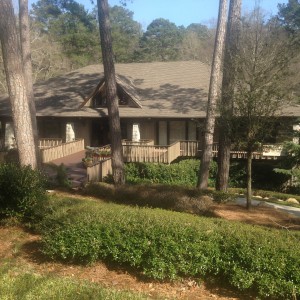
Chattahoochee Coffee Company
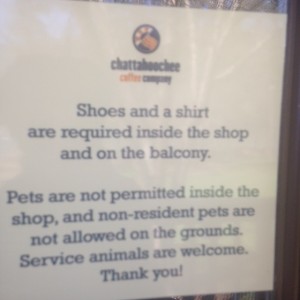
Here is a sign that is posted at every entrance of the Coffee Shop. It sets the tone of who and what is allowed on the premises. Although you may sit shirtless or in a bikini on the river, you can not enter into the shop without following the proper dress code. It is open to public, as long as you abide by their standards.
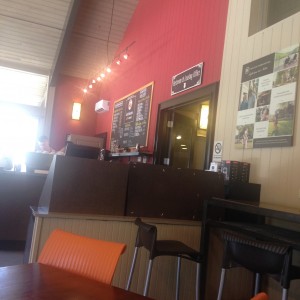
Although there are two locations to the Chattahoochee Coffee Company, this one lies inside an apartment community, so because it us open to the public, it would only make sense to make the environment advertising to bring in more residents. Pictured here is the order counter, menu and an apartment guide board advertising the area and providing historic information on the Coffee Company. As you can see the coffee shop leads to the leasing office.

The environment was very welcoming here. There was even music that gave off a getaway vibe. I heard one lady describe it as a “coffee retreat” lol As you can see, I decided to take a sit in, after being welcomed in by the smell of sweet mocha 🙂 I decided to enjoy a peach apricot pear smoothie. By the way, it was incredibly smooth and delicious. I know, I know, its a coffee company, why not enjoy some coffee, but this day in particular was sort of warm, and the smoothie menu was quite irresistible.
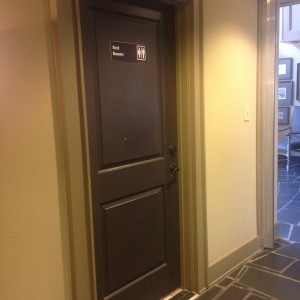

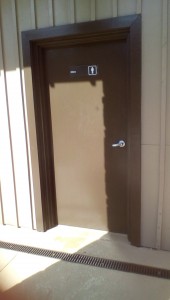
Pictured here are the three restrooms accessible to the public. I particularly wanted to see what kind of restrooms that they would have available. This is something that I very rarely pay attention to at all. I did notice that they had a men’s and women’s restroom and also a unisex bathroom (family restroom as we would call it) Given today’s society, Im sure this would make everyone feel comfortable being able to have access to whichever restroom the desire
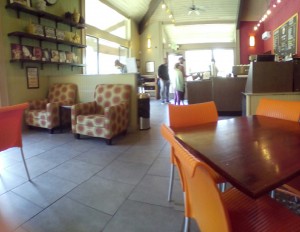
As I sat here, I observed a different variety of people enter, order, mingle and leave. The environment was very welcoming and the baristas were very pleasant. In this picture you can see a few people who decided to come in on this beautiful day.I witnessed everyone chatting amongst themselves. I honestly have to say that with all of the media attention on racial issues, it was quite refreshing to see people of different backgrounds mixing and mingling, sitting having coffee and enjoying each other’s company. Sorry I didn’t zoom in, I didnt want to look too creepy lol.
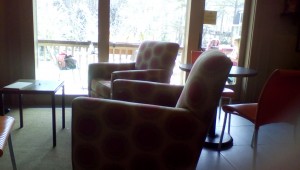
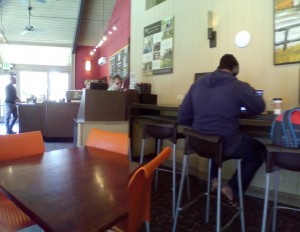
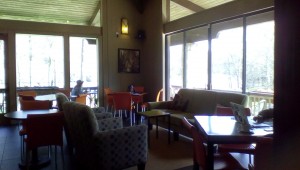
As you look around in these picture you can see the modern touch that the place has. It was designed to provide comfort for all people, whether you came to sit alone and enjoy some quite alone time with a cup of coffee, or whether you came in for a group meeting or even social hour. There was just enough spacing between the seats for privacy. There is an open glass view around the entire coffee shop, I am assuming, its purpose was to allow you be able to see the calming river view, and to provide sunlight so that you can still feel like you are outside somewhat, and hey I am reaching far by saying this, but possibly allowing the sunlight to enter so that you wont fall asleep in the coffee shop (those who came to do homework, studying and such like the guy pictured here) By the way, the vaulted ceilings were beautiful, it created a dimensional and open effect, reminded me of a cabin.
Although this was a interior project, I could not just show you the Coffee Shop, but what was most appealing to me and all of my senses was the River view. From the outside, you can smell the roasting of the coffee beans that the wind wafted through your nose. On the outside you can see how close you can actually get to the river. the sound of the water was serene. This place really provided me a place of peace and comfort. Pictured here are a few different people, who came out to enjoy our first few days of warmth by reading books, listening to music, bringing their newly walking babies out for a walk and so much more. I even saw ducks, how cool huh.

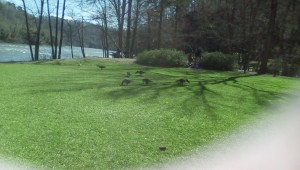
Chattahoochee Coffee Company has two locations in Atlanta and one is located off of Akers Mill Road in the Walton Community Apartments which are beautiful, freshly renovated apartments. It is a gated community that you must dial into to gain access, which I personally did not mind at all. Although this place is open to the public Monday through Friday, it is closed and privately caters to residents on the weekends. When I say this place made me want to give up my house and get a lease on an apartment, I mean it. It is kind of tucked away, I have lived in this area for over a year now and without this project I would have never found this little serene place.
It is in the midst of the freshly apartments, so you just kind of blend in with the residents once you are out of your car. Before I got there, I did a little research while trying to find the address, many people who left reviews did say that it was a little difficult to access due to GPS not being able to find it easily, which I agree. But once I got there I didn’t mind having to search for it.
The coffee shop was surrounded by green pasture, the calming Chattahoochee River, bare trees and friendly faces who seem to be at peace, and I can guarantee the environment and coffee had a lot to do with it. By the way, the coffee smell from the outside was superb. I sat outside before entering, and there I found ducks quacking, people reading alongside the river sipping coffee and families taking walks. There was a mix of people in the environment, mostly middle class, that made me feel very welcome. Many people I saw were dressed in business like clothes, obviously on the go, just making a stop to their favorite coffee shop.
On the inside, there were exciting colors, like orange chairs, tiled floor, and even open river view glass walls that brought a modern look which is different from a boring quiet coffee house that you’re prone to falling asleep in. As I mentioned earlier, this coffee house was very well built with relaxation and peace in mind. Also they had the best smoothies ever, and I’m sure their coffee is even more delightful.
I have realized that in every college course that I have taken that requires research and application, things are done differently. Every professor has a different approach but the theme of it all remains the same. In other classes we have been required to write papers based off of our own knowledge, other’s testimonies, but in this particular class we tend to do lots of writing based off of texts, statistical data and research, and our own primary research, which by the way was very exciting to do. While doing the class projects we are allowed to do it all. We have the reading summaries where we interpret someone else’s articles and research, find and build our own research through annotated bibliographies, and my favorite, observe and evaluate built environments through our own eyes and senses.
I have learned that if it was possible, I would prefer to always perform primary research, it’s much more exciting and a lot of research is biased or opinionated, can be factual, but it’s important to make sure that you have the correct information at all times. That is why if you are going to use secondary research, it is important to use credible sources that provide factual and correct information.
In this class I have been learning how to do proper research, and even been able to improve my citation skills, which I could of always used some help. I plan on taking this new and improved knowledge and applying it to my remaining projects.
In this class environment, we write for one another in our blog posts. Before this class I had never written a blog before. It took some getting used to, which I’m sure is the same for others. This kind of writing makes everything I write public for anyone, particularly my classmates participating in research. Between the reading summaries, annotated bibliographies and built environments we provide research that others will not have to do on their own, which is very useful and helpful to say the least. It reminds me of a full database to find anything you want to know about Atlanta’s atmosphere and history. It feels good to know that my research can help someone else and not just end up in a trashcan after our professor grades them and to me that is a great plus.
As in every class I have my strengths and unfortunately some weaknesses, but I am happy to receive any feedback that makes me a better writer. I realize that I can make some valid points, that I am pretty concise, and I tend to be very detailed but on the other hand I have a problem staying on topic and shifting between persons, that is something that I have always done and am looking to get better at. This is why I have never really been great with summaries because I tend to flash between my opinion and opinion or facts stated.
Currently I have not done much to earn extra points due to my crazy work schedule and life changes but, I’m looking forward to changing that really soon because I’m not so satisfied with the effort that I’ve placed into these other activities, but I have witnessed that life is unexpected and sometimes we have to create new balances in our time and activities. I can say that I look forward to group meet ups, and participating in some of the online quizzes in some of my spare time. Overall, this class has been a helpful one, very accommodating and interesting to say the least. I plan on using the rest of the semester to improve my writing and enjoy everyone’s research.
Annotated Bibliography #4
Bracey , Trayon . “The Big Discussion with Gentrification in Atlanta .” The Lifestyle Room . 20 Jan 2016. Web. 24 Feb 2016. <http://artrevmagazine.weebly.com/lifestyle/the-big-discussion-with-gentrification-in-atlanta.
The Big Discussion with Gentrification is a topic discussed with Travon Bracey published by The Atriv Magazine in the Lifestyle section. This article discusses His personal experiences of living in Atlanta and how gentrification has affected him and black culture as a whole in terms of socially, financially, politically, mentally and also educationally.
He discusses his experiences in the East Lake neighborhood as a child growing up, he reflects back on his memories of living in these neighborhoods and all the good memories he once shared there, with the people, the inspiring graffiti walled art,(what we may think is gang related), just everything in the environment that creates black culture. He discusses the differences in the community from then to now. He makes a lot of valid points in my opinon…
This article goes to show that even though Tom Cousins and other investors who helped clean up the neighborhood, bringing about a change, completely transforming the neighborhoods, may have very well did everything that they did with GREAT intentions for us all, but not everyone sees it that way and Travon is just one of those people who decided to speak on his views on how gentrification erased the historical and sentimental meaning of the black culture in those neighborhoods, by mixing them or completely taking them over making them unrecognizable to what some used to call home.
This article was an insightful, just to be able to read another side of a story of someone who views the former East Lake neighborhood as something more than a drug filled, crime raised, dead cop zone.
Annotated Bibliography #5
“PBS Newshour.” Chasing the Dream: Poverty and Opportunity in America. PBS, 09 May 2015. Web. 22 Feb 2016. http://www.pbs.org/newshour/bb/can-u-s-break-clusters-poverty-roiling-south/.

Chasing the Dream: Poverty and Opportunity in America is described as a multi-platform public media initiative that provides a deeper understanding of the impact of poverty on American society. This article, which I saw as the complete opposite of “The Big Discussion of Gentrification of Atlanta by Travon Bracey.
This platform allows Jimmy Williams, who after prison dedicated his life to improving poverty driven neighborhoods, to tell his story on how he was caught up dealing drugs in the East Lake community. He describes the toughness of the town and the difficulties to succeed and how he succumbed to the streets and dealing drugs, which landed him seven years in prison and also gave him what he needed to be who he is today, to be able to help those who was once in his position and to prevent others from being there.
This platform speaks of positivity about the transformation. Through research you’ll see that there are several sides to how gentrification has affected its people who live and have lived in these neighborhoods. This article just shows that everything that Tom Cousins and the foundation, Purpose Built Communities, set out to do to improve not just the neighborhood but the community surrounded by them, did in many ways have a great impact on many people.

Annotated Bibliography #6
Felton, Carly. “Atlanta Intown .” Transformation of East Lake.Springs Publishing LLC, 01 Aug 2009. Web. 20 Feb 2016. <http://www.atlantaintownpaper.com/2009/08/the-transformation-of-east-lake/>.
The Transformation at East Lake is an article published by Carly Felting, who discusses the stats that made East Lake neighborhoods such a poverty crazed and criminalized place to live in. it gives a great visual as to why, when and how to why Tom Cousins decided to embark on the journey to transforming East Lake Atlanta’s neighborhoods, these neighborhoods that were once filled with drug dealers and lords, Tom had a vision and though it is was quite risky, it was the greatest endeavor yet. This article would we great for research because it puts numbers into the equations for greater understanding as to how rough and tough these neighborhoods were before the transformation. There are also statements provided from those who were born and raised, or those who did the raising of their children there, stating that being born and subjected to this neighborhood, they never had a chance.
The article discusses the restoration of the golf course, building of new homes, and the transformation of the community, it is very detailed with numbers and it ends with stats showing the outcome of Tom Cousins attempt to making it greater, it shows in numbers the percentage of children and families who now have a chance.
His and Hers: Designing for a Post-Gender Society is an article published on Metropolis magazine which is written by Suzanne Tick in March of 2015. She is the creative director for Teknion Textiles and also the United States’ number one leading textiles designer. In this article she argues for gender neutrality in the workplace.
The article opens up talking about how society’s roles of traditional females and males are changing. This is mostly due to the advancements of science and technology. She begans to address how designers should be on the lookout for advancement too, in order to accommodate these cultural changes in order to promote acceptance as society has.
We address how feminism is now making its way into this once male dominant society. For many years males have always been dominated in power, certain job fields and in top offices, with the example being that eighty-five percent of IT and web design being male.
Emma Watson’s “He for She” movement speech has went viral causing a lot of support for gender equality. Currently, gender roles have been altered in the workplace as women become more important. With all of this taking place, the actual designs of places have become a lot softer creating a gender neutral working environment with open windows, carpet and textiles.
She talks about how gender roles have been switched and that fashion and beauty were the first to embrace this change by some making products like makeup more appealing for men, and women’s coats getting a masculine, militia cut. She then goes on to discuss the confusion of gender roles in today’s society. Which I believe was inevitable. Nothing is solely for women or for men these days. Especially given the fact that now we have children who oppose to being identified by either male or female at school, but rather just an individual.
We also discuss the recent changes in corporations in adopting gender-neutral atmospheres such us workplaces and not to mention bathrooms, which seems to be a great deal debate. The idea is to grow with society’s advancements allowing everyone to feel a sense of inclusion and acceptance all while feeling comfortable in their work environments or in any places open to the public.
She then speaks about how girls are dressed like boys and boys dressed like girls and how adrogony is truly taking place in today’s society. People have the opportunity to be whatever and play whatever roles they want to these days and how schools and fashion designers have become accepting of these things in ways of creating multistall restrooms and creating clothing designs that fits individuals and not just females or males.
Tick then discusses the trans CEO of United Therapeutics, who is the highest paid female executive in the United States, who was biologically born male. This goes to show how things has made a tremendous turn around and this is only the beginning.As we made advancements in our society,we must stay alert and ahead with our design to help implement change.
 hat, Atlanta is segregated in certain parts with certain people.
hat, Atlanta is segregated in certain parts with certain people.
 As I sipped my peach mango smoothie, I observed my surroundings which was filled with a diversified group of people alongside the river. This made me feel very welcome. There was a family walking along the river with their newly walking baby, a couple of college students huddled together studying, an African American guy listening to music as he read a book, and etc. The coffee shop attendees were very pleasant and made sure that everyone was comfortable and received the best service you could have asked for. I was very pleased with the environment. I just would have never imagined something so serene, I would have access to.
As I sipped my peach mango smoothie, I observed my surroundings which was filled with a diversified group of people alongside the river. This made me feel very welcome. There was a family walking along the river with their newly walking baby, a couple of college students huddled together studying, an African American guy listening to music as he read a book, and etc. The coffee shop attendees were very pleasant and made sure that everyone was comfortable and received the best service you could have asked for. I was very pleased with the environment. I just would have never imagined something so serene, I would have access to.










 In this first picture, you can see the many different characters that stars in many of his shows and plays. This picture shows what it is all about about, the drama, the hurt, pain, hardships but also the glory and comedic relief that it provides to the audience.
In this first picture, you can see the many different characters that stars in many of his shows and plays. This picture shows what it is all about about, the drama, the hurt, pain, hardships but also the glory and comedic relief that it provides to the audience.















